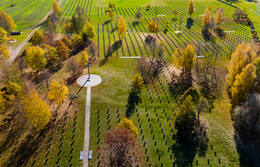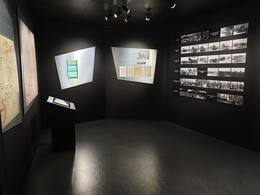Kuršo mūšių metu dingę vokiečių armijos kareiviai - Hermanas Faulsas
Vokietijos armijų grupės „Šiaurė“, kuri vėliau, per Kuržemės apgultį, buvo pervadinta į „Kurlandą“, dokumentuose vis dar nėra aiškios informacijos apie maždaug 50 000 Vokietijos armijos kareivių. Šie kareiviai įtraukti į dingusių be žinios kovų metu sąrašą. Net ir šiandien šių kareivių giminaičiai bando Kuržemėje rasti savo giminaičių ir protėvių pėdsakų – tiek dokumentinių, tiek fizinių. Viena iš tokių istorijų yra apie Hermaną Faulą, kuris dingo nuo 1944 m. gruodžio 27 d. – 3-iojo Kuržemės mūšio, arba Kalėdų mūšių.
Hermannas Faulas gimė 1909 m. sausio 21 d. Rotselberge, Reino krašte-Pfalce, Vokietijoje. Pagal profesiją – stalius, vedęs, turi dukrą.
Nuo 1939 m. spalio 1 d. tarnavo Vokietijos armijos grupės „Šiaurė“ daliniuose.
Iš pradžių Vakarų fronte, o paskui į rytus.
Nuo 1942 m. vasario iki balandžio (36-ojoje tiekimo mainų kuopoje Trier Feyen) jis praleido ligoninėje dėl pirmojo laipsnio visų rankų ir kojų pirštų nušalimų. Po to grįžo į savo dalinį Rytų fronte.
Laipsnis: eilinis, vėliau kapralas. Dingęs nuo 1944 m. gruodžio 27 d. netoli „Paugībeli“ namų, į pietvakarius nuo Džūkstės, Kuržemėje.
http://kurland-kessel.de/
Susijusi laiko juosta
Susijusios vietos
Hermanno Faulo atminimo vieta
Jis įsikūręs kaimo kelių sankryžoje, nukrypus nuo kelio, vedančio iš Pienavos į Džūkstę.
Paminklas H. Faului ir devyniems vokiečių bei latvių kareiviams, žuvusiems 1944 m. gruodžio 27 d. mūšyje (tikriausiai susprogdinus juos tiesiogiai pataikius patrankos sviediniui) ir nuo to laiko laikomi dingusiais be žinios, nes nerasta jokių jų palaikų, dokumentų ar kitų tapatybės įrodymų.
Saldaus vokiečių kareivių kapinės
Saldaus vokiečių kareivių kapinės yra prie Saldaus–Ežerės plento. Kapinėse, užimančiose 8 hektarų plotą, yra apie 25 000 vokiečių kareivių, taip pat kai kurių Latvijos legionierių palaikai. Perlaidojimai vyksta nuo 1997 m.
Nuo gegužės 1 d. iki spalio 1 d. memorialiniame kambaryje galima apžiūrėti parodą apie Kuršo mūšius. Šiuo laikotarpiu memorialinis kambarys dirba darbo dienomis nuo 9:00 iki 17:00 val., o šeštadieniais ir sekmadieniais kapinėse dirba ir gidas. Taip pat galima susipažinti su Saldaus vokiečių kareivių kapinėse palaidotų ir visoje Latvijoje žuvusių kareivių sąrašais.
Ezerės kraštotyros saugykla „Muitas Nams“
Ezerės muitinė yra Ezerėje, netoli Saldaus-Mažeikių plento, Latvijos ir Lietuvos pasienyje. 1945 m. gegužės 8 d. šiame pastate buvo pasirašytas vadinamojoje „Kuršo kišenėje“ apsuptų Vokietijos armijos dalinių „Kurzeme“ (Kurlandas) kapituliacijos aktas. Manoma, kad Antrasis pasaulinis karas iš tikrųjų baigėsi Ezerėje. Muitinėje yra ekspozicija, kurioje aprašomi Antrojo pasaulinio karo pabaigos įvykiai, ir eksponatai, kuriuose išsamiai aprašoma Ezerės parapijos istorija nuo seniausių laikų iki šių dienų. 1945 m. gegužės 7 d. rytą Leningrado fronto vadas maršalas L. Govorovas išsiuntė armijų grupės „Kurzeme“ vadovybei ultimatumą sudėti ginklus. Kapituliacijos aktą susijusios šalys pasirašė gegužės 8 d., jame išsamiai aprašyta perdavimo tvarka, ginklų surinkimo punktai, pateiktini dokumentai ir informacija bei kitos praktinės priemonės.










